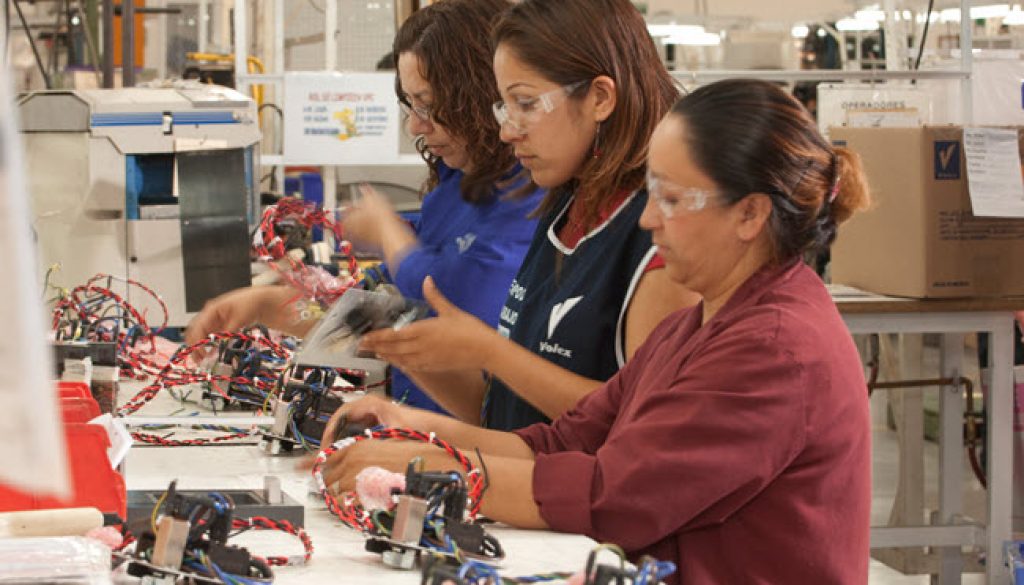Mexico Manufacturing Reducing Production
Mexico Manufacturing Reducing Production Costs 50% or More
U.S. companies are exploring Mexico manufacturing as a way to reduce production costs 50% or more.
In response to global economic fluctuations, companies have to constantly modify their budget plans. CEO’s must use strategic thinking in order to create and deliver a product that will keep them in competition with other companies. For this reason, quality is not always the most important factor in manufacturing.
Regardless of a product’s quality, if a competitor is producing higher quantities in a more cost efficient manner then they are more likely to generate greater revenues than their competitor who is producing the same product at a higher cost.
This way of thinking varies among companies, as one company may have success with a certain strategy while another does not.
In recent months, potentially radical changes suggested by Donald Trump have caused waves throughout the economy. This has caused manufacturing businesses to modify their plans in order to be more flexible to change. The fragile economy has U.S. companies developing new strategies for the health of both their present and future business. Companies must look ahead and plan accordingly in order to maintain their business’s growth. However, Trump’s promise to keep U.S. businesses on U.S. soil by prohibiting movement to foreign countries has greatly influenced business owners’ decisions.
Mexico Manufacturing – A Serious Consideration
Some businesses have taken extreme measures by moving plants and headquarters out of the country, often at their own risk. While moving between states might improve company budgets, hiring workers from another country where the wage is much lower can significantly reduce overall costs as well as the cost of products. Many CEO’s have opted for hiring workers in Mexico to do the same job an American would have done in the past but at a much lower cost. NAFTA (North American Free Trade Agreement) facilitates bringing goods into the U.S. duty-free, which makes hiring Mexican workers the simplest choice for U.S. companies that want to stay on top of economic changes. The choice to move manufacturing to Mexico where employees deliver the exact same product at much lower costs without compromising quality or quantity has dramatically benefited both Mexican lives and revenue stream for U.S. companies.
Despite the wage gap between Mexico and America, Mexicans who have had the opportunity to work for these companies have experienced a positive impact in their lives professionally and economically. This has been a source of controversy among Americans. They view the situation as if they are losing their jobs to foreigners, which is something Trump has spoken out against.
Many manufacturers in the U.S. have chosen the option of using robots to do certain jobs. In this case, they would only have a few workers overseeing the machines’ efficiency rather than paying more workers to do the manual labor themselves. With Mexico Manufacturing it is cheaper to have humans do the manual labor at a much lower wage than it is to employ the use of robots. This strategy allows many companies to stay in competition with their rivals.
There have been mixed opinions and concerns regarding the companies that have decided to hire employees in Mexico. Economists suggest that this decision benefits both countries, whereas others have agreed that hiring Mexican workers hasn’t had any effect on the low employment rate in the U.S. nor the loss of jobs.
Numerous manufacturing companies have found success with Mexico manufacturing, and it is apparent that it has had a more positive impact than a negative one. Despite Donald Trumps’ belief that all U.S. companies should be kept within the U.S., many companies have gone ahead with foreign manufacturing. Yet the economy was able to generate high numbers of jobs since December 2017. Giving work opportunities to our neighboring country’s employees has shown to improve overall manufacturing in the U.S.
Manufacturing companies moving across the border is a trend that will continue. Only time will tell how many jobs will continue to be created in the U.S., and whether or not this trend is jeopardizing America’s economic stability and professional opportunities.
Companies foreign to Mexico who would like to learn more are invited to visit http://tecma.com.





